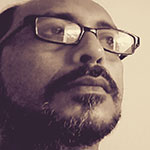Screenplay "Free Yourself" — an American Story by Kelly LaCombe

Review by Triptayan Chatterjee
Kelly LaCombe's screenplay dives into the depths of the meaning of life, and all of its ups and downs, in this story of an incredible journey for the truth.
This is LaCombe's first narrative feature. However, you would never know. The imagery and the gradual advancement of the story prove that in today's world, entertainment is not the ultimate word.
Instead, the message a story delivers is as important as the actual cinema.
A Message About Life in America
LaCombe explores the journey of a woman who dives into the heart of people, along with the heart of universal truth.
"Free Yourself" begins in 1972 in America, where a woman is fighting for freedom from gender bondage, and to get a larger arena of life for women everywhere.
From the very beginning, we see that the writer has a deep concentration on film language. With the very first shot, LaCombe implements the power of film language.
She narrates every pixel of the characters: TJ, as well as his father and mother. LaCombe describes every gesture and posture of the moving and inert characters.
A foreshadowing of the plot goes through a deep-rooted analysis which presents us with a successful narrative.
As the entire storyline should not be discussed in any review, it can't be stated here. Nevertheless, it's difficult to leave out plots and subplots along with the storyline of the script.
From the very first shot, it seems, that entire production is prepared. The script only needs a camera and light to capture the moments that transpire. That is the specialty of the script here; excellent dialogue.
[caption id="attachment_8846" align="aligncenter" width="323"] Image via Alumni US[/caption]
Image via Alumni US[/caption]
The characters all play vital roles. Ultimately, the message is that we must constantly fight the negativity of life.
The anguish of addiction
The script explores the causes of using drugs due to frustration. As a matter of fact, LaCombe successfully expresses the physical and well as mental anguish that drug addiction causes in individuals. Not to mention the larger impact on society.
The storyline is simple and sometimes may look a bit traditional. Nonetheless, the inner meaning of the story tells the truth of a global psycho-social problem.
From script to screen
As the script progresses we observe the gradual transformation and expansion of social problems in American society. In the long run, it's a fight through the struggle that highlights a solution in the script.
A script, particularly a screenplay makes the space ready for the camera. "Free Yourself" is written in such a way that when the writer narrates the face of Rusty, it seems that the camera is positioned in a close-up and the message is coming straight from the character's mouth.
Every part of the plot and sub-plot are written with the camera, and lighting in mind. Though there is no mentioning of the camera or other equipment it seems there is an invisible story-board. Truthfully, LaCombe has already done much of the job for the director and the cinematographer.
The psychology of it all
Another success in the script is the interaction between Kashmir and the Egyptian man. Here the small details of the psychological aspect of mankind are uniquely drawn.
The role of the mom to get rid of the problems is converted into a social struggle starting from family life. The therapist plays the role of the social engineer. So in the script parallel, we see the wonderful comparison between the individual feelings within people reflected as a social output.
There's no exterior conflict in the story. All the conflict happens internally and spans over the years from a day at the beach in 1972 and passing through to 1990.
[caption id="attachment_8847" align="aligncenter" width="1920"] CC0 Creative Commons by Vania Raposo Image via Pixabay[/caption]
CC0 Creative Commons by Vania Raposo Image via Pixabay[/caption]
The shots, images, and scenes shape in such a way which keeps the audience engaged. LaCombe's script proves that a film is only as good as its screenplay. The more the screenplay is powerful, the more the film gets value. Truthfully, the script is the backbone of good cinema.
That's a Wrap
LaCombes screenplay shows us that a film is not only the game of editing of visual effects. Though many films try to cover up a lack of a good storyline with the editing and effects. But here we see the difference. Here we get the actual definition of what a cinema is, and what a screenplay contributes.

Triptayan is a filmmaker looking for a different horizon. Earlier a journalist Triptayan has done intensive research on film language and made different documentaries so far. He is now concentrating upon feature film in a vast landscape. Professionally a teacher, Triptayan has also passion for making films threaded with international and universal thoughts.


